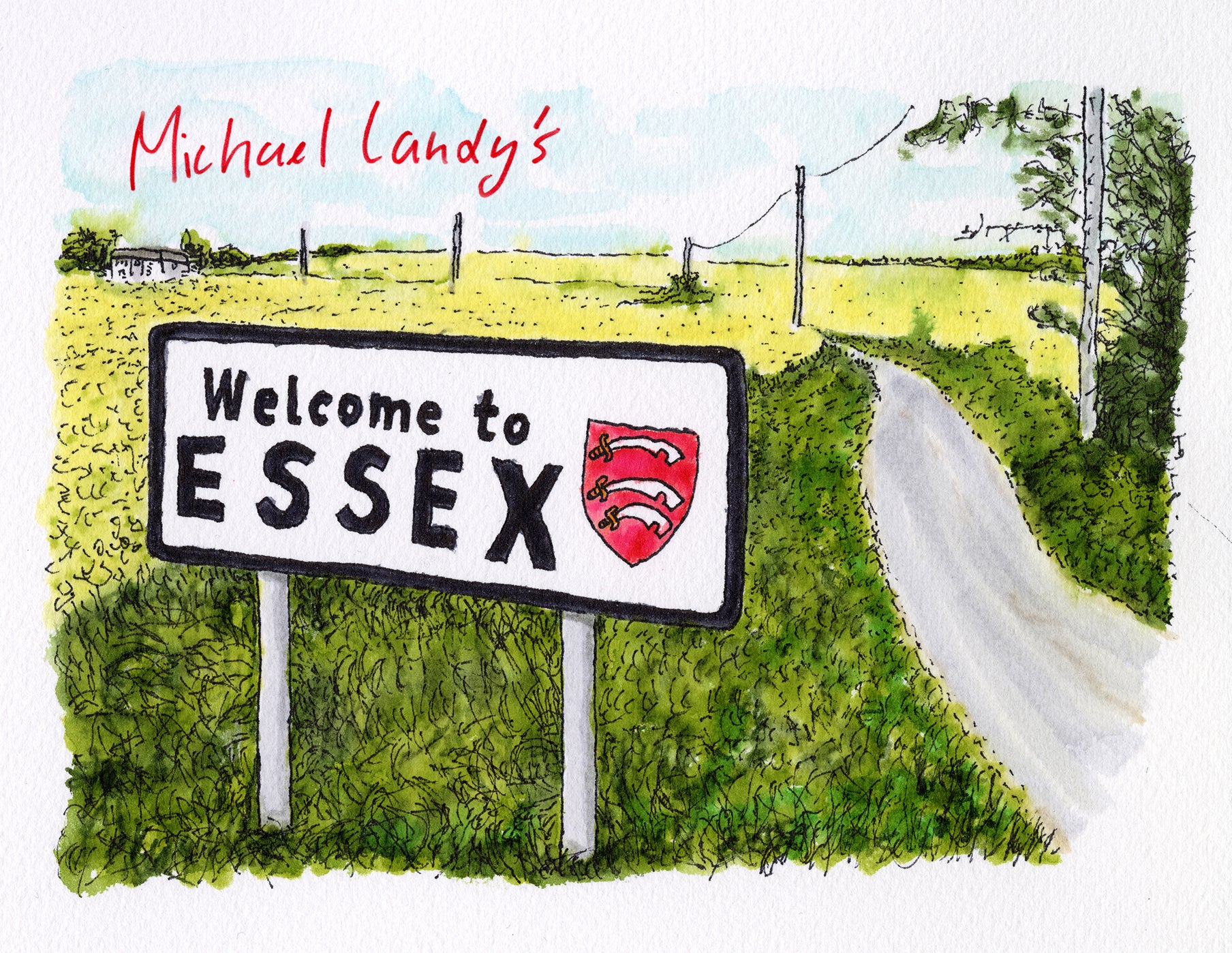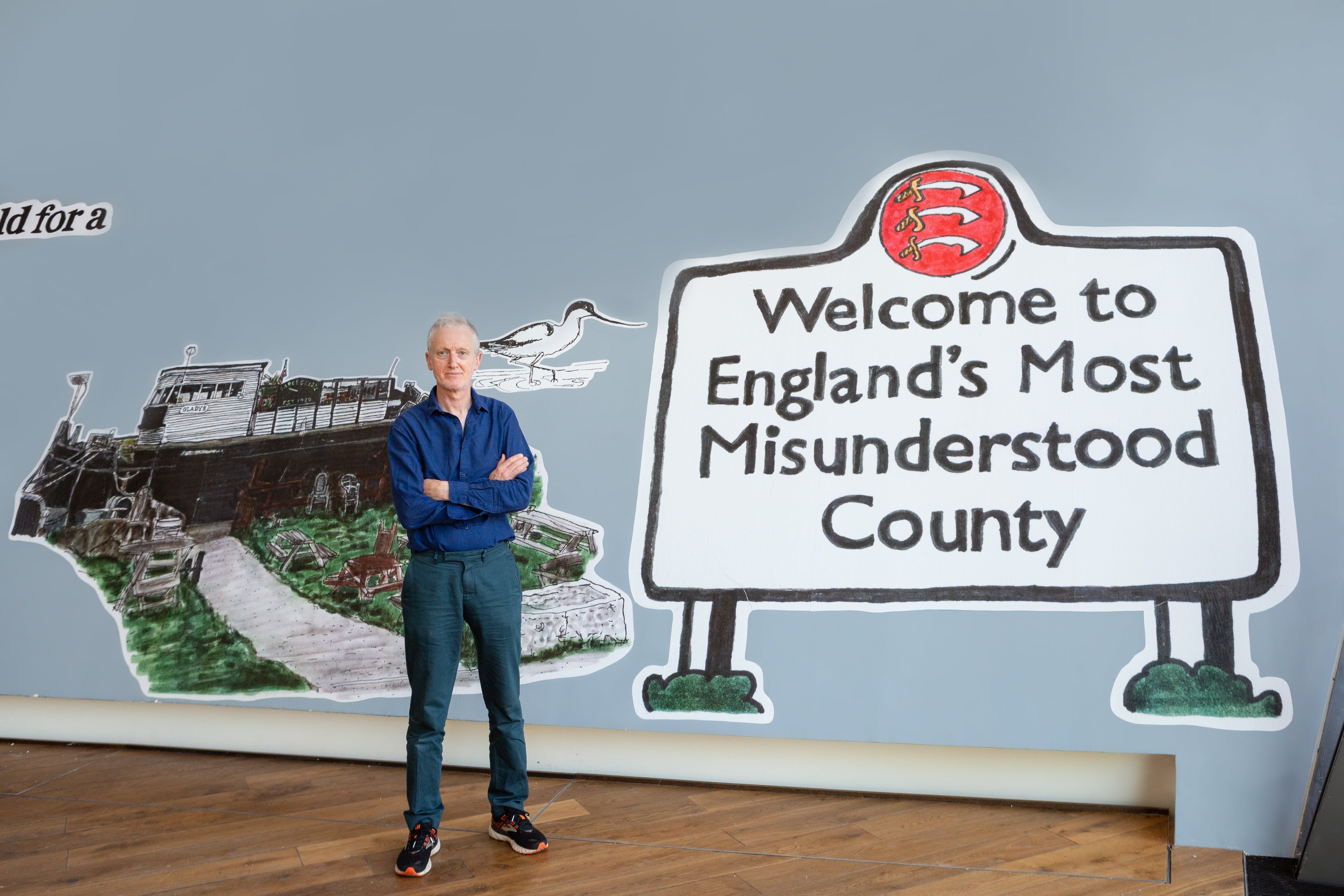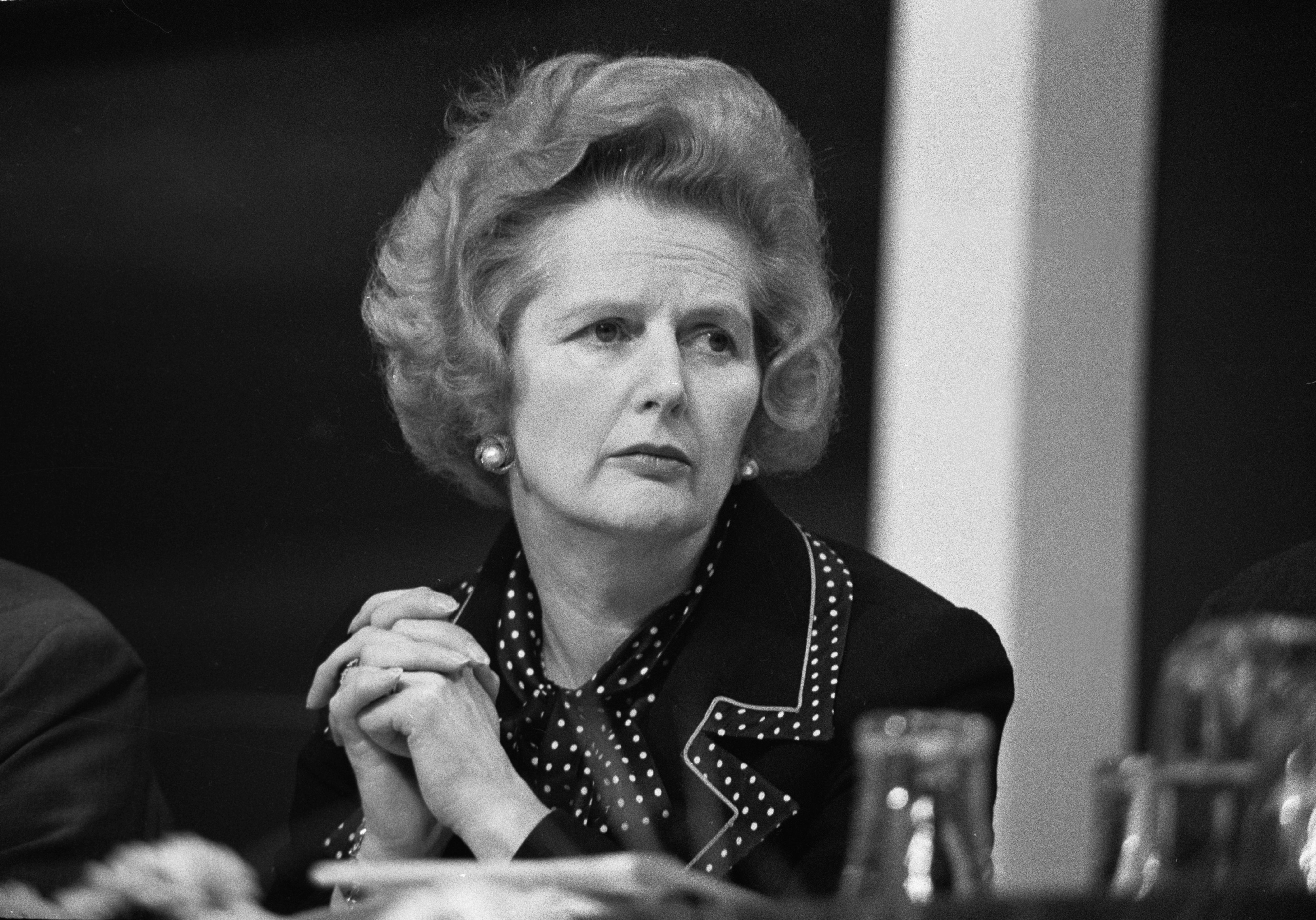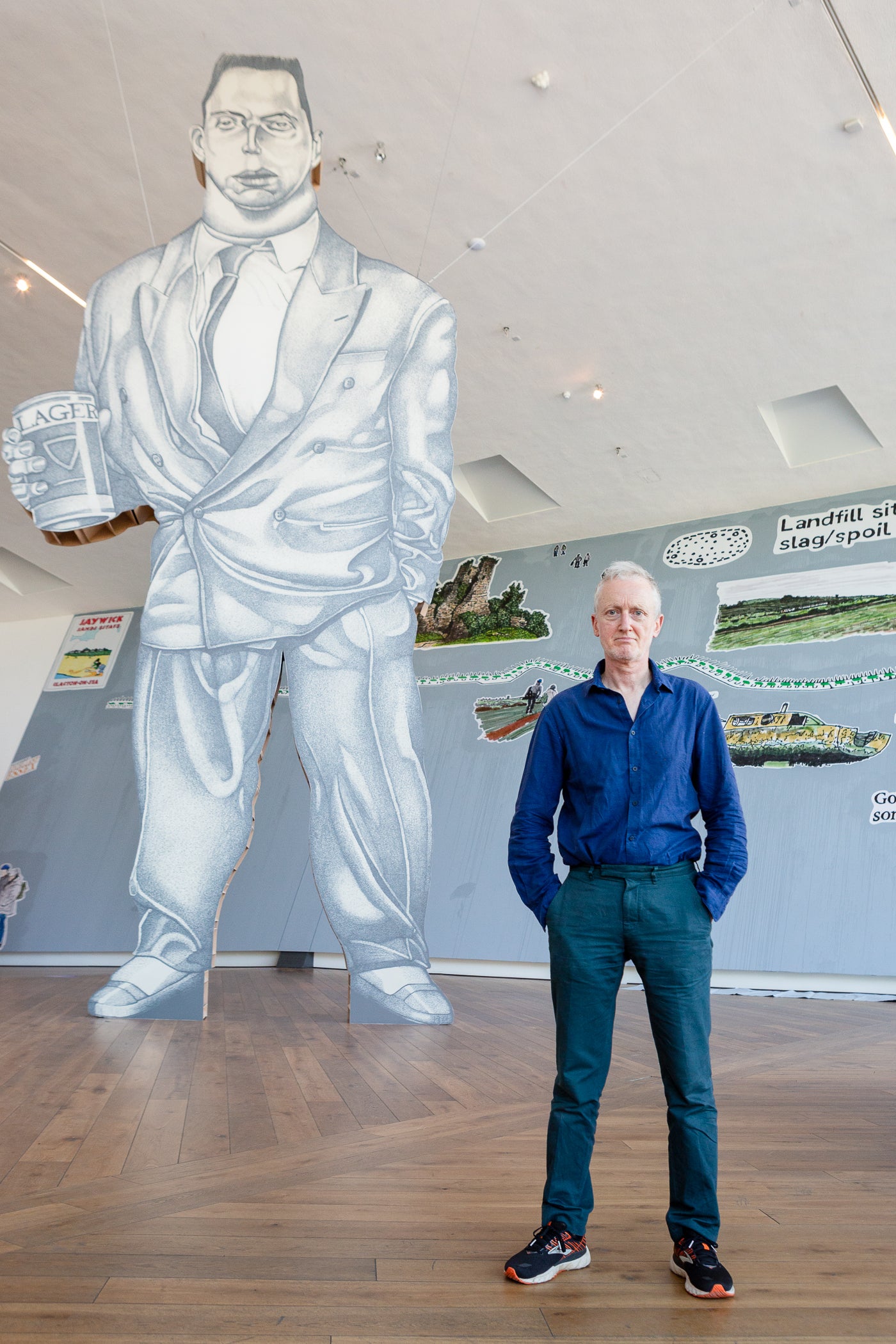From ‘Essex Girl’ to Towie: A new exhibition shows the county has had the last laugh
Mocked and maligned for generations, a new exhibition from Michael Landy that shows how Essex has been portrayed in the media over the past 30 years aims to change your mind, writes William Cook


Welcome to England’s most misunderstood county,” reads the sign in the foyer of Firstsite, Colchester’s stylish arts centre. No prizes for guessing which county that might be. The answer is (and always has been) Essex. Mocked and maligned for generations, it’s been the butt of snobby put-downs for as long as anyone can remember. But now the tide has turned. People from Essex have always been fiercely proud of their home county, and now they’re reclaiming those elitist sneers and turning them to their own advantage. There’s an extra swagger about Essex nowadays, a self-confidence that other counties lack. And the latest sign of that self-belief is this new exhibition, Welcome to Essex, by the artist Michael Landy.
“You could look at this exhibition and think, ‘Oh, Michael Landy hates Essex’,” he tells me, as he walks me round the show. “I’m not saying that at all.” On the contrary, his exhibition is a celebration of a place that’s so often dismissed as somewhere that good taste forgot – “an easy target for lazy journalists,” as Landy puts it. Welcome to Essex surveys that lazy journalism and reveals the more complex truth beneath. For Landy, it’s about the “demonisation of the working class” but it’s a demonisation that’s driven by unease. The raw mercantilism of Essex, its refusal to mind its manners, has always been a threat to the metropolitan status quo.
Landy grew up in Ilford, once part of Essex but now part of London (however, like a lot of that East London hinterland it retains its Essex identity to this day). One of the Young British Artists who broke through in the 1990s, he’s probably best known for Breakdown (2000-2001) in which he catalogued and then destroyed every single thing he owned. Ironically, he’s now turned his attention to a county commonly associated with conspicuous consumption. Welcome to Essex shows how Essex has been portrayed in the media over the past 30 years, and how that public image has shifted, from sexist “Essex Girl” jokes to aspirational shows like The Only Way is Essex (Towie star Amy Childs is Michael’s cousin). “Reading all the headlines, you start to build a picture,” he says. It’s a picture of caricature and condescension, but Essex has had the last laugh.
The starting point of the show is Simon Heffer’s seminal article, written for The Telegraph in 1990, which coined the term “Essex Man”. Entitled “Mrs Thatcher’s Bruiser”, the article identified a new phenomenon – the working-class Estuarial Tory who’d put Thatcher into Downing Street, and kept her there for 10 long years. As Heffer explained, Essex Man was not confined to Essex, but Essex was his spiritual home, his happy hunting ground. “He is discovered in his aboriginal state, and in the greatest abundance in the triangle between Brentwood, Southend and Dagenham,” wrote Heffer, who hails from Essex himself. “His recreations are drinking with his mates, watching sport on Sky television, playing with his car, and thinking about (and occasionally attempting) sexual intercourse.” Heffer’s tone was sardonic, his observations tongue-in-cheek, but his rhetoric was rooted in admiration, not disdain. As he observed, under Thatcher the Tories had changed from an establishment party to an anti-establishment party, and the reason for this change was Essex Man.
The rise of Essex Man was a body blow to the Labour Party. They could see their traditional powerbase collapsing, as the historic bond between the working classes and the unions began to break apart
The “greed is good” decade, the 1980s, marked the ascent of Essex Man. Thatcher came to power in 1979, and one of the key policies of her first term was enabling council tenants to purchase their council homes at knock-down prices (and resell them, on the open market, at a tidy profit, if they chose). This policy proved popular, especially in the upwardly mobile commuter towns of Essex – the first council house to be sold off was in Romford, now part of London, but still an Essex town in all but name.
Home ownership was central to Essex Man’s identity. It was part of his Thatcherite philosophy of self-help and independence – independence from the government, the local council, the trade unions… for the father of Essex Man, a steady job in manufacturing was something to aspire to, and belonging to a union went with it. For Essex Man, this was anathema. Self-employment, entrepreneurialism – that was the way ahead. His grandfather was an East End docker who’d left the Big Smoke in search of a nicer lifestyle for his children. His father worked at the Ford factory in Dagenham, and went on strike when his shop steward told him to. Dad and Grandad both read the Daily Mirror and voted Labour all their lives. Essex Man worked as a broker in the City. He read The Sun and voted Tory. City brokers used to be public schoolboys, but the Big Bang had changed all that. Now the best brokers in the Square Mile were barrow boys like him. “He’s very savvy about making money,” says Landy, of Essex Man. “Doesn’t like paying much tax, doesn’t like being told what to do, owns his own home, sees the Labour Party as people who are going to tax him and take away his money.” Thirty years on, Labour is still struggling to win these voters back.

Ever since it lost its urban and industrial heartlands to London in the 1960s, Essex has been True Blue, but Thatcher was the first Tory leader who connected with Essex Man since the days of Winston Churchill. Eden, Macmillan, Home and Heath were all far too patrician (Heath was actually from a humble background, but that wasn’t how he came across). However for Essex Man, Thatcher was a natural fit. “He really loved Thatcher,” says Landy. “It wasn’t really about the Tory Party. Thatcher was something else.” Before she became Tory leader, Labour controlled a few Essex seats, but her 1979 and 1983 election wins whittled that number down from three to two and then from two to one. In her third election victory, in 1987, every constituency in the county turned Tory.
The rise of Essex Man was a body blow to the Labour Party. They could see their traditional powerbase collapsing, as the historic bond between the working classes and the unions began to break apart. It also caused considerable disquiet among posher, more moderate “One Nation” Tories, who’d been the dominant force in the Conservative Party before Thatcher became PM. For these liberal Tory “Wets”, Essex Man was far more alien than the moderate Labour MPs on the opposition benches. Julian Critchley, a moderate Conservative MP, spoke for Tory Wets everywhere when he confessed that “Essex Man rather frightens me to death”.

He was quite right to feel frightened. As Peregrine Worsthorne (the Telegraph editor who commissioned Heffer’s Essex Man profile) observed: “Everything that liberalism doesn’t like, Essex Man stands for.” Moderate Tories and Labourites alike feared Essex Man’s naked Thatcherism, and castigated it at every turn. “His self-reliance is ridiculed as naked materialism, his patriotism parodied as racialism, his reactionary moral and social code is decried as anti-intellectual chauvinism,” wrote Heffer. He needn’t have worried. Liberal ridicule and parody proved useless against the might of Essex Man. Thirty years later, he’s no longer a renegade, an outsider. His beliefs have become government policy. His ideas have become mainstream.
Heffer’s article was published 7 October 1990. Barely six weeks later, on 23 November, Thatcher resigned, forced out by liberal Tories led by Michael Heseltine. Heffer had identified a trend, but had he identified a trend whose time had passed? However, the 1992 general election showed that Essex Man was not dead, but sleeping. The Conservatives won, against the odds, and the place that sounded the death knell for Neil Kinnock’s hopes was Basildon, in Essex (where else?), where the Tories repelled a Labour challenge in what was for Kinnock a must-win seat.

Essex Man took a long siesta during the Blair, Brown and Cameron years (relaxing in his timeshare on the Costa del Sol, no doubt) but at the EU referendum in 2016, he returned with a vengeance. Brexit was his finest hour (all 18 Essex constituencies voted Leave) and in the 2019 general election Boris Johnson’s Conservatives won every one of those 18 seats, matching Thatcher’s Essex whitewash back in 1987.
Heffer’s article was a product of its time, and some of its tropes don’t play so well today, but it’s aged far better than most of the other representations of Essex in Landy’s exhibition. Particularly galling is an intensely patronising (and profoundly unfunny) Spitting Image sketch which pours scorn on Essex as a cultural wilderness of satellite dishes and stone cladding, where men wear shell suits and Union Jack boxer shorts. The Essex Girl jokes are even worse – a collective form of slut-shaming in which fun-loving working-class women are dismissed as greedy, empty-headed slags. “They’re misogynistic, they’re aggressive, but people used to laugh at them.”

However, Landy goes deeper than these examples of anti-Essex “humour”. He also charts the way in which every sort of commentator, from academics to tabloid journalists, has exploited Essex Man (and Essex woman) for their own ideological ends. Essex has been weaponised by the left and by the right. “Essex Man has seen off socialism,” claimed conservative historian Norman Stone. “Long Live the Essex Girl,” declared feminist thinker Germaine Greer. What both viewpoints have in common is that they regard people from Essex as victors, not victims. London and the other home counties may look down on them, but they don’t care. They’re secure in their identity and confident in their abilities. They may not speak proper or act proper, but they know how to get ahead. “The Essex Girl is tough, loud, vulgar and unashamed,” wrote Greer in The Guardian, 20 years ago. “She neither knows nor cares that she is the target of the nastiest kind of misogyny.” Likewise, Essex Man is indifferent to the derision of posher people from more fashionable postcodes, be they liberal Londoners or One Nation Tories from the Shires.
There is another side to Essex that’s more rural, more historic. It’s a side I saw last year when I walked along Essex Way. Running for 82 miles from Epping on the eastern edge of London to Harwich on the North Sea this bucolic footpath passes through numerous antique villages, and vast tracts of unspoilt countryside. Landy has walked some of this scenic route, and he’ll be walking more of it during the duration of this show. He’s documenting his Essex hikes in words and pictures along Firstsite’s enormous foyer wall. He was particularly intrigued by the Plotland houses he saw on his walk from Benfleet to Leigh-on-Sea, which were built by East End families between the wars, on plots of farmland with no amenities. For Landy, these makeshift homes are a potent symbol of Essex nonconformity and individualism, a deep-seated desire to shake off the shackles of the nanny state and go it alone. “The Plotlanders are very much like Essex Man, in a way.”
As Landy says, if Kent is the garden of England, Essex is the patio. It’s too close to London to avoid the gravitational pull of the metropolis, but a bit too far away to be sucked into its orbit. Londoners look down on folk from Essex, but they’re also intimidated by their success. The county has always had a rebellious streak, a refuge for bandits and outlaws, and a steady influx of Eastenders has given this subversive spirit a sharper, more streetwise edge. In the course of assembling and mounting this show, Landy’s view of Essex has evolved. “I think I have a greater understanding of what motivates Essex Man,” he says. “He wants a better life for his family.”

Time’s up. Landy has to go. He’s got an interview with BBC Radio Essex. Before I head off, I take a last look around the exhibition, and end up watching an archive interview with Julian Critchley, in which he provides the definitive description of Essex Man. “Essex Man is the son of a docker who moved out into the wastelands of Essex, who worked at Fords, who probably bought his own council house, who abandoned the Labour Party and whose political views are very much to the right of Conservative sentiment.”
That was 30 years ago. So what’s changed? Well, Essex Man has matured, and in some respects he’s mellowed, but the big difference is that the Critchleys of the Tory party, those moderate, liberal, Europhile Wets, have more or less disappeared. They’ve been ousted by Johnson. Essex Man has become the bellwether of Conservative Party policy. His views are faithfully reflected in everything this administration does. I guess whether you think this is a good thing or a bad thing depends, to a large degree, on which way you voted in the last election, and in the EU referendum. During my 82-mile walk along the Essex Way, from east London to the North Sea, I was blown away by the beauty and rich heritage of Essex, and the vivacity of the people I met along the way. Landy’s lively exhibition reminded me of why I’m so fond of it. However, after 30 years of living alongside him, and seeing him go from strength to strength, I can’t say I’m all that fond of Essex Man.
Michael Landy’s Welcome to Essex is at Firstsite in Colchester until 5 September, admission free
Join our commenting forum
Join thought-provoking conversations, follow other Independent readers and see their replies
Comments